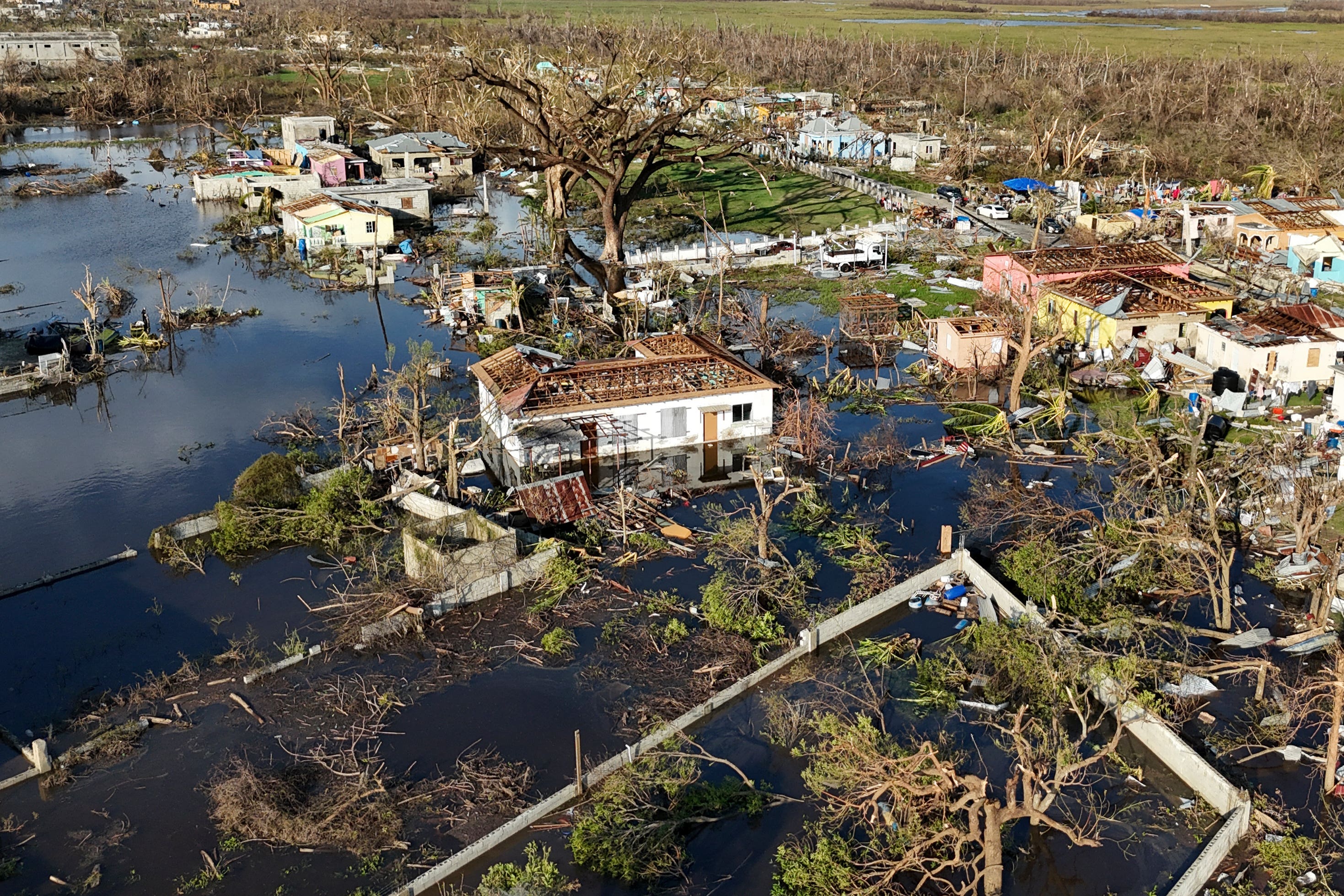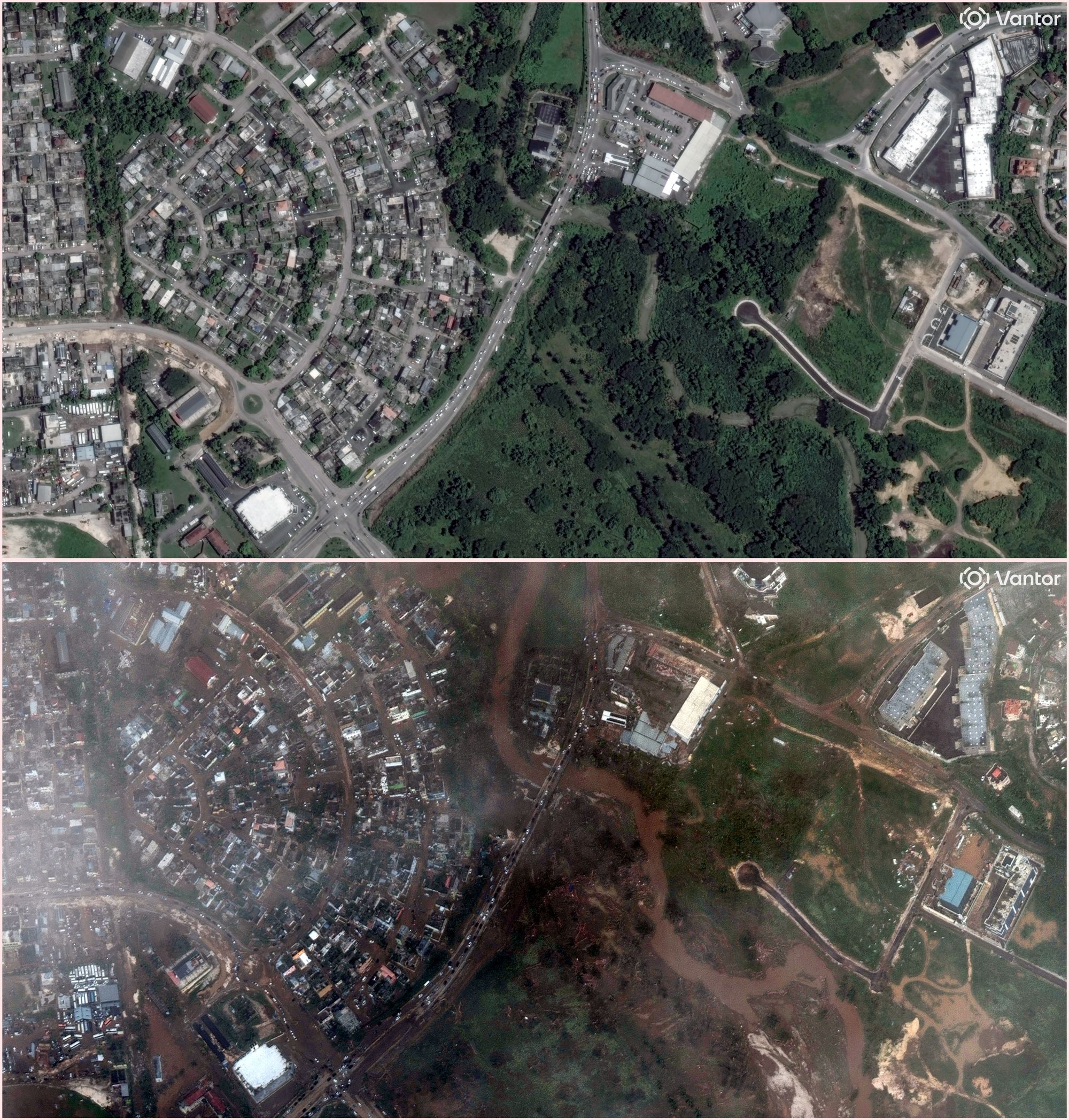From reproductive rights to climate change to Big Tech, The Independent is on the ground when the story is developing. Whether it’s investigating the financials of Elon Musk’s pro-Trump PAC or producing our latest documentary, ‘The A Word’, which shines a light on the American women fighting for reproductive rights, we know how important it is to parse out the facts from the messaging.
At such a critical moment in US history, we need reporters on the ground. Your donation allows us to keep sending journalists to speak to both sides of the story.
The Independent is trusted by Americans across the entire political spectrum. And unlike many other quality news outlets, we choose not to lock Americans out of our reporting and analysis with paywalls. We believe quality journalism should be available to everyone, paid for by those who can afford it.
Your support makes all the difference.
Read more
Hurricane Melissa tore its way through the Caribbean this week, with 185pmh winds laying waste to anything in its path.
Dozens of people have died and billions of dollars worth of damage has been caused after the category 5 storm made its way through Jamaica, Cuba, the Dominican Republic, Haiti and the Bahamas.
However while it was dubbed the Storm of the Century, forecasters have warned it could be anything but. Experts say climate change means storms of this severity are becoming far more commonplace.

open image in gallery
Black River, Jamaica, in the aftermath of Hurricane Melissa (AP)
A report by Deep Sky, a project in Canada that aims to reduce global carbon levels, found that the frequency of extreme hurricane rainfall has jumped by 300 per cent over the last four decades.
Severe hurricane rainfall that used to occur only once every 100 years, will now happen every 25. “These are no longer rare events,” the report warned. “They will happen with greater frequency and severity. It’s our new normal.”
“The effects of climate change build on each other and its fingerprints are all over this storm,” Max Dugan-Knight, a climate data scientist at Deep Sky added. “As we continue to warm our oceans storms will only get stronger and more deadly.”

open image in gallery
Parts of St. Elizabeth, Jamaica, were left under water after the storm (AFP via Getty Images)
Researchers at Imperial College’s Grantham Institute have estimated Melissa was 10 per cent stronger, and four times more likely, thanks to global warning.
In a cooler world, a Melissa-level hurricane would have made landfall every 8,000 years but with 1.3°C warming, this is now expected once every 1,700.
Scientists with the non-profit Climate Central estimate that the “rapid intensification” conditions that allowed the storm to accelerate so quickly – jumping from category 4 to 5 in 24 hours – were made at least 500 to 800 times more likely by human-caused climate change.

open image in gallery
A satellite image of the Barnett River along Montego Bay before Hurricane Melissa made landfall, and after (Vantor)
Hurricane conditions flourish at around 26C, says Alex DaSilva, lead hurricane expert at AccuWeather. On the day that Melissa approached Jamaica, the sea was hotter than usual, at 30C. The conditions served as “jet fuel” for the growing beast.
“You’re talking about 4C warmer than what is needed for a hurricane,” says DaSilva. “It was about 2C, even 3C in some areas, warmer than what is average in that area for this time of the year. Unfortunately, we’re going to be seeing more of that.”
According to Mr DaSilva, research reveals increasing episodes of rapid intensification over the last 10 to 15 years where “storms explode very quickly”.

open image in gallery
Residents self-evacuate under pouring rain from Playa Siboney to safe locations ahead of the arrival of Hurricane Melissa, in Santiago de Cuba (AFP/Getty)
While research is still being conducted on whether storms will increase in quantity, studies already show that those that do form are likely to intensify more rapidly and be stronger in future because of warmer sea surface temperatures.
Given the changing nature of such storms, there have been suggestions that the classification system itself needs to be reviewed. Melissa made landfall as a category 5 hurricane, the highest level. Higher categories don’t exist because once infrastructure is destroyed, exponentially higher speeds make little difference.
“Once the house is gone, it’s gone, it doesn’t matter how high the wind blows,” said Dr Ralf Toumi, co-director of the Grantham Institute for Climate Change.

open image in gallery
Residents gather amid debris in Black River, Jamaica, in the aftermath of Hurricane Melissa (AP)
“It is the most powerful to hit Jamaica, is tied for the strongest tropical storm making landfall in the Atlantic basin in history, and has broken records for having the highest wind speed ever recorded in the region.”
Melissa’s severity has again highlighted the need for combined international efforts to combat climate change.
UK foreign secretary Yvette Cooper told her cabinet colleagues this week that the hurricane underlined the importance of the upcoming Cop30 summit in Brazil, with “those affected by climate change unable to pick up their island and move it out of the way of the approaching storm”.
Scientists have long-warned that vulnerable countries, contributing relatively low numbers to global carbon emissions, will pay the cost of human-induced climate change.
Jamaica – victim of what the British Red Cross has dubbed an “unprecedented catastrophe” in Melissa – contributes a negligible amount to global climate emissions at a miniscule 0.02 per cent.
However, with conservative estimates suggesting that the island – whose annual GDP is less than $20bn- facing costs of billions of dollars to rebuild its battered infrastructure, it could take at least a decade or more to recover.
